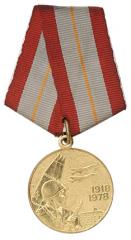

The CCP joined with the Nationalist Party in 1924, and the alliance proved enormously successful at first. In the turmoil of 1920s China, CCP members such as Mao Zedong, Liu Shaoqi, and Li Lisan began organizing labour unions in the cities. Those two men and others had come out of the May Fourth Movement (1919) and had turned to Marxism after the Bolshevik victory in the Russian Revolution of 1917.

The CCP was founded as both a political party and a revolutionary movement in 1921 by revolutionaries such as Li Dazhao and Chen Duxiu. Since the establishment of the People’s Republic of China in 1949, the CCP has been in sole control of that country’s government. SpaceNext50 Britannica presents SpaceNext50, From the race to the Moon to space stewardship, we explore a wide range of subjects that feed our curiosity about space!Ĭhinese Communist Party (CCP), also called Communist Party of China (CPC), Chinese (Pinyin) Zhongguo Gongchan Dang or (Wade-Giles romanization) Chung-kuo Kung-ch’an Tang, political party of China.Learn about the major environmental problems facing our planet and what can be done about them! Saving Earth Britannica Presents Earth’s To-Do List for the 21st Century.Britannica Beyond We’ve created a new place where questions are at the center of learning.100 Women Britannica celebrates the centennial of the Nineteenth Amendment, highlighting suffragists and history-making politicians.COVID-19 Portal While this global health crisis continues to evolve, it can be useful to look to past pandemics to better understand how to respond today.Student Portal Britannica is the ultimate student resource for key school subjects like history, government, literature, and more.Britannica Explains In these videos, Britannica explains a variety of topics and answers frequently asked questions.Demystified Videos In Demystified, Britannica has all the answers to your burning questions.



 0 kommentar(er)
0 kommentar(er)
